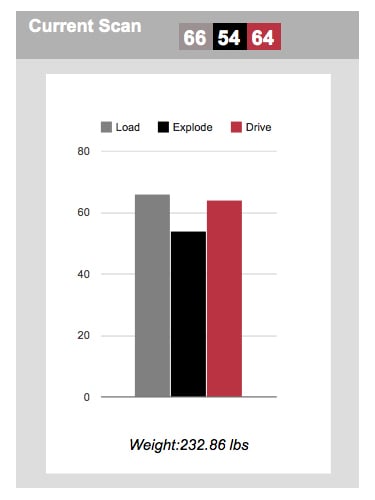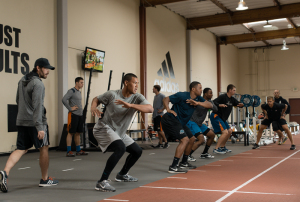
The less effort, the faster and more powerful you will be. – Bruce Lee
The word power is often misused in our industry. Usually, we see it used in place of “explosive” or “athletic,” but when training athletes to be more powerful we really mean the scientific definition; power = force x velocity. We see a lot of athletes being trained for maximum velocity all the time, but there are many athletic movements (throwing, agility, weightlifting) that not only require high power output, but a tremendous amount of tempo. In these types of movements, timing is key to optimize accuracy and speed, so emphasizing pure velocity is not always needed.
A great example is our rotational Sparta Signature. In this case, we’ve found that pitchers actually benefit from losing force during the transition phase of a movement (see signature right). When the t score for EXPLODE is lower than LOAD and DRIVE, it represents the athletes ability to create force, relax, and then regain or decelerate the force they created.
Anther great example of this concept is one that our statistician partners at BYU recently found. They studied 2 years worth of Signatures from over 100 of our professional and collegiate athletes and found that the athletes who are at the greatest risk for musculotendinous injuries (hamstring, quad, groin pulls) are those with the highest vertical jumps. Think about that for a second. The athletes who performed the best vertical jumps during the force plate scan are the ones who are most at risk for injury!

This serves as another example that we as performance coaches need to re-think our goals. For decades our performance metrics have been based on a pretty simple rule; the best prepared athletes are the ones who perform best during our tests (run faster, jump higher, etc.). In reality, the best athletes are the ones who perform best on the field or court, and are able to stay healthy during long competitive seasons. There are athletes (track and field, swimming, weightlifting) where pure speed and power are the goal, but for athletes in a sport that combines speed and power with skill and timing, we need to incorporate performance goals and measurements that take all of the athletes’ needs into account.